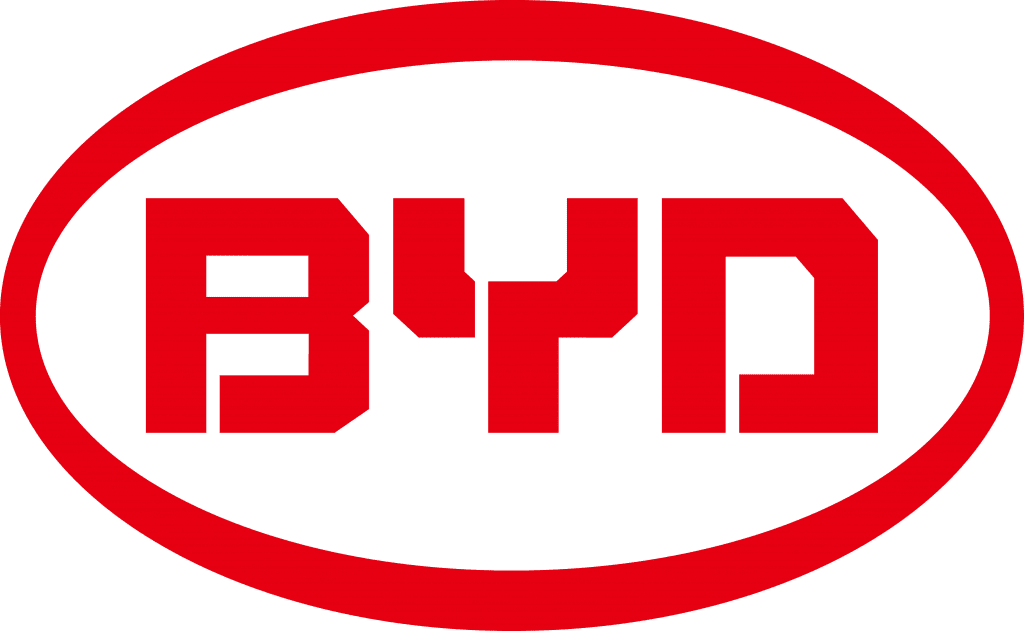BYD (比 亚迪, if you can read Simplified Chinese) is a Chinese company specialising in electric vehicles (EVs) and batteries. Founded in 1995, it is still run by its founder Wang Chuanfu, who was born to a family of poor farmers and whose parents had died by the time he was in high school. Now, BYD is one of the top five battery manufacturers in the world – and they’re the biggest manufacturer of EV batteries. Backed by Warren Buffett’s Berkshire Hathaway (the ~10th biggest company in the world), who have a ~25% stake in the company, it has revenues in the tens of billions of dollars and profits in the hundreds of millions – in other words, it’s incredibly bankable. It’s based in Shenzhen – “China’s Silicon Valley” – near Hong Kong.
亚迪, if you can read Simplified Chinese) is a Chinese company specialising in electric vehicles (EVs) and batteries. Founded in 1995, it is still run by its founder Wang Chuanfu, who was born to a family of poor farmers and whose parents had died by the time he was in high school. Now, BYD is one of the top five battery manufacturers in the world – and they’re the biggest manufacturer of EV batteries. Backed by Warren Buffett’s Berkshire Hathaway (the ~10th biggest company in the world), who have a ~25% stake in the company, it has revenues in the tens of billions of dollars and profits in the hundreds of millions – in other words, it’s incredibly bankable. It’s based in Shenzhen – “China’s Silicon Valley” – near Hong Kong.
And yes, BYD stands for Build Your Dreams.
Before we get to batteries, a little about their vehicles, as that’s actually their biggest business unit. Most people haven’t heard of BYD, but they’re actually surprisingly common – especially their electric buses. Outside of China, BYD buses can be found in, among others, Canada, the USA, Brazil, Chile, India, Japan, Israel, Finland, Germany, Italy and the UK. In fact, if you’ve taken the bus to Sydney or Brisbane airport, it’s very possible you’ve ridden a BYD.

They also make coaches, vans, trucks, forklifts, and a host of cars (some of which definitely look slightly similar to non-BYD models… look online for BYD S8)
That’s all interesting, but what we really care about is their batteries. BYD have just released a whole new range of solar batteries, and have worked closely with inverter manufacturers, such as Sungrow and Fronius, to ensure their batteries play well with the inverters. In fact, as of the time of writing, some inverters are only guaranteed to work with BYD batteries!
The new BYD range, the BYD Battery-Box Premium (BBP), consists of four products – the LVS, LVL, HVS, and HVL HVM. The LV ones are low-voltage (40~59V), so work with low-voltage inverters. The HV ones are high-voltage (120~600V), and work with high-voltage inverters. HV is ~1% more efficient than LW, but otherwise there’s not much difference. All are DC-coupled. They all use lithium iron phosphate (LiFePO4) technology, the same as sonnen and in Tesla cars.
The LV BYD BBPs are incredibly scalable. The LVL comes in 15.4kWh units, but up to 64 can be used together to have 983kWh of storage – that’s enough to run your average house for about a month and a half! The LVL can output 250A continuously, plenty to power your entire home (~15kW). The only slight downside is that it is IP20, i.e. inside only.

The LVS is similar to the LVL, although comes in 3.84kWh blocks. Up to 6 of these can be combined to have 23kWh in a vertical stack. Alternatively, up to 4 can be combined in a stack to have 15.4kWh, then 16 of these can be connected for 245.8kWh. If you only have one unit, the max output is 65A (~3kW), although with more you can again get up to 250A, as per the LVL. The LVS is IP55, meaning it can be outside.
The HVM is the next one we’ll talk about. The smallest HVM is 8.3kWh, which consists of three blocks. This can be increased up to 8 blocks, for 22.1kWh. Like the LVS, this is IP55. The HVM can “only” supply 50A, but as it is HV, it can provide up to 20kW of power continuously (see Electricity Basics for more understanding).

Finally, the HVS. Blocks of ~2.5kWh, minimum of 2 (5.1kWh), maximum of 5 (12.8kWh). Max power ~15kW. IP55.
Lots of options! Well, kind of. As of the time of writing, only the LVL and the HVM are available in Australia. That said, it still means you have an option whether you have a LV or HV inverter, and as most households have 5~15kWh of storage, either option is sufficient.
All BYD batteries have a 10-year warranty
BYD already own the EV battery market, and with this new offering, it’s very likely BYD will claim the top spot as solar battery manufacturer. However, there are still other excellent alternatives. We’ve installed hundreds of LG Chem Resu batteries; LG is also a top-five worldwide battery manufacturer, and also make the cream-of-the-crop solar panels – they know this industry. Or, if you have an existing system and simply want to add a battery, you’d want an AC-connected battery – sonnen and Tesla are both great brands.










